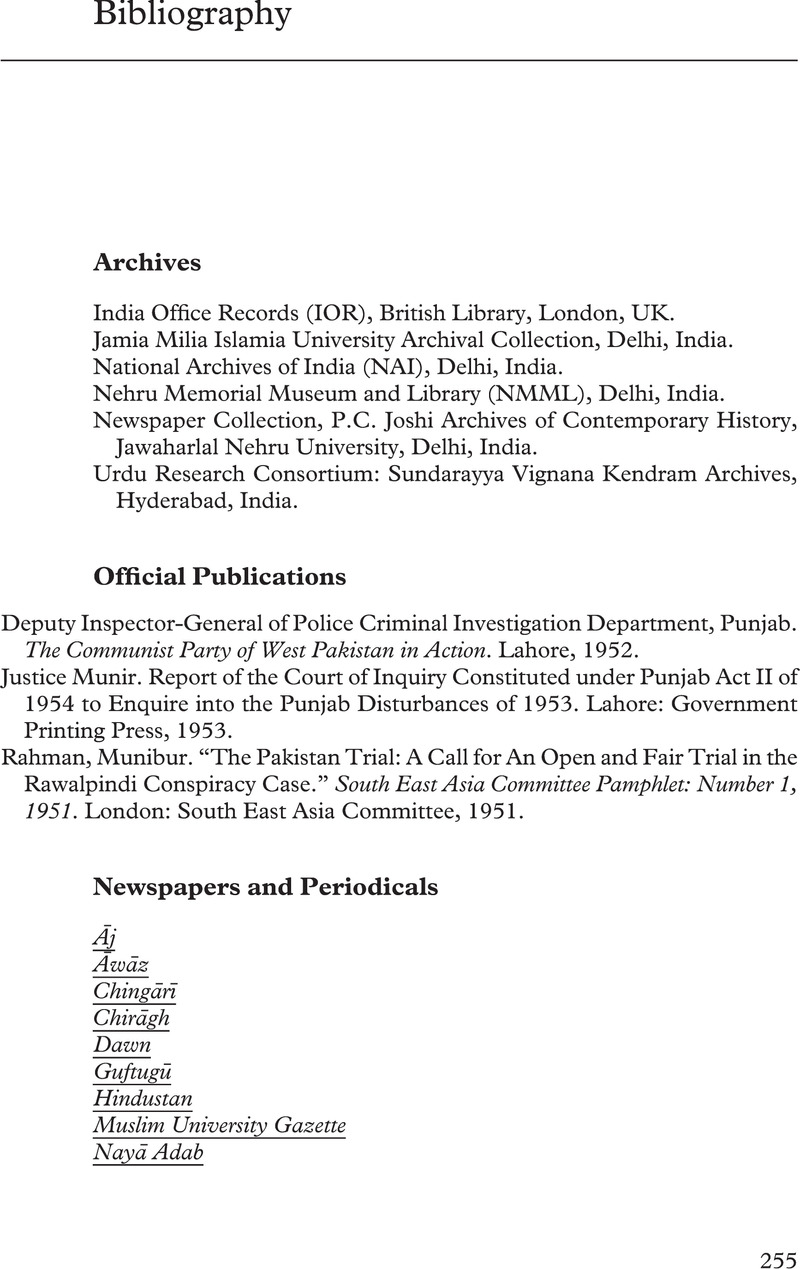Bibliography
Published online by Cambridge University Press: 06 January 2022
Summary

- Type
- Chapter
- Information
- Hidden Histories of PakistanCensorship, Literature, and Secular Nationalism in Late Colonial India, pp. 255 - 275Publisher: Cambridge University PressPrint publication year: 2022

